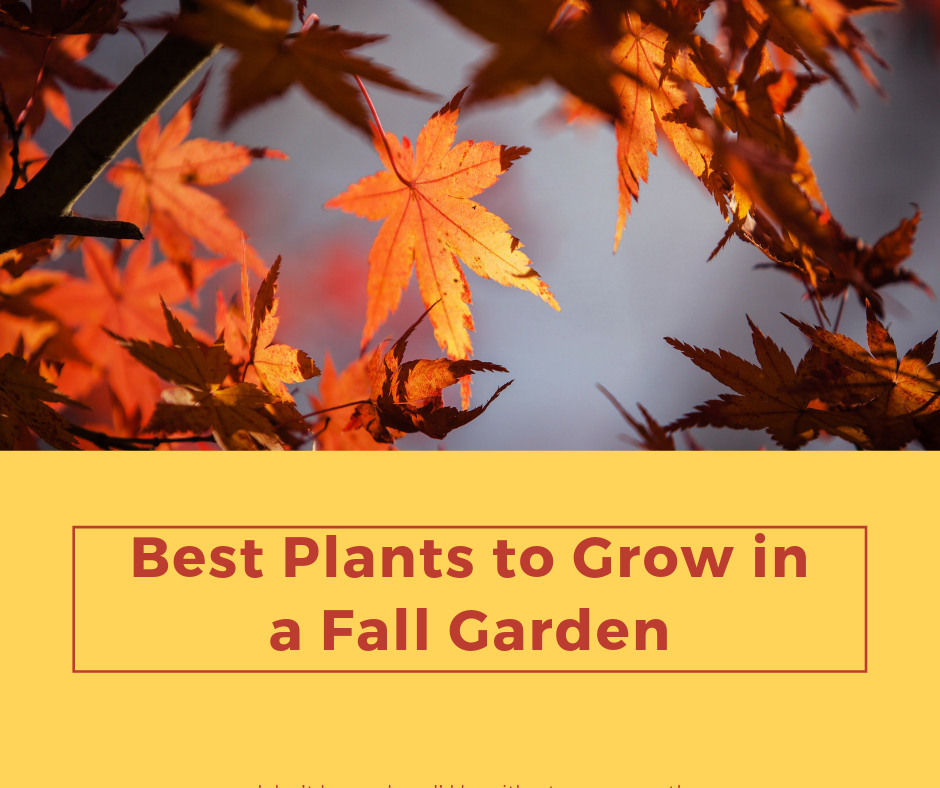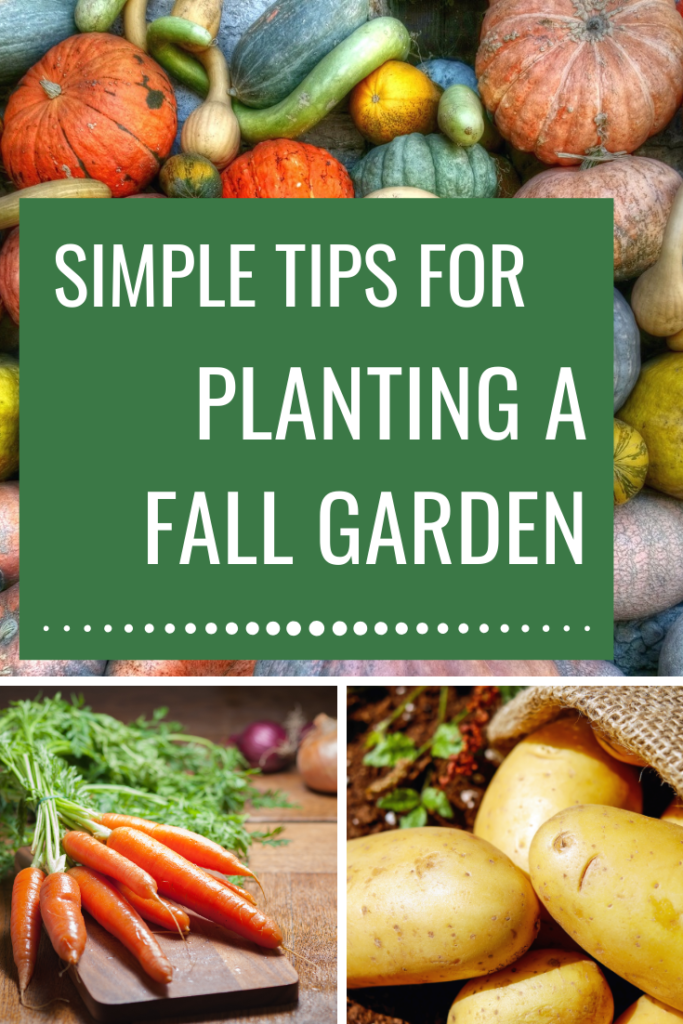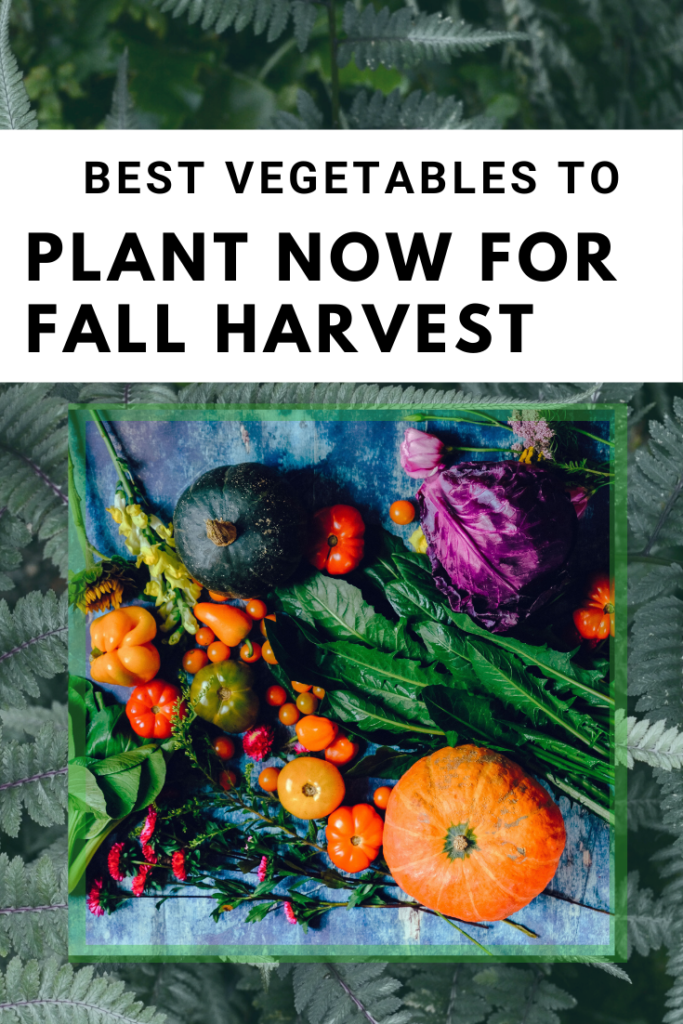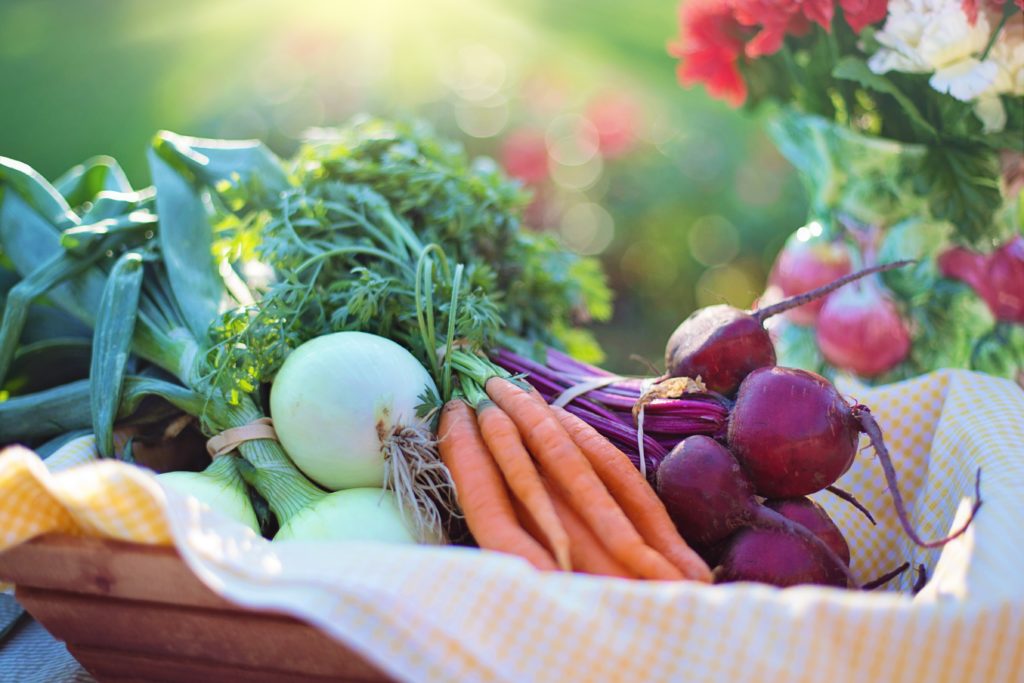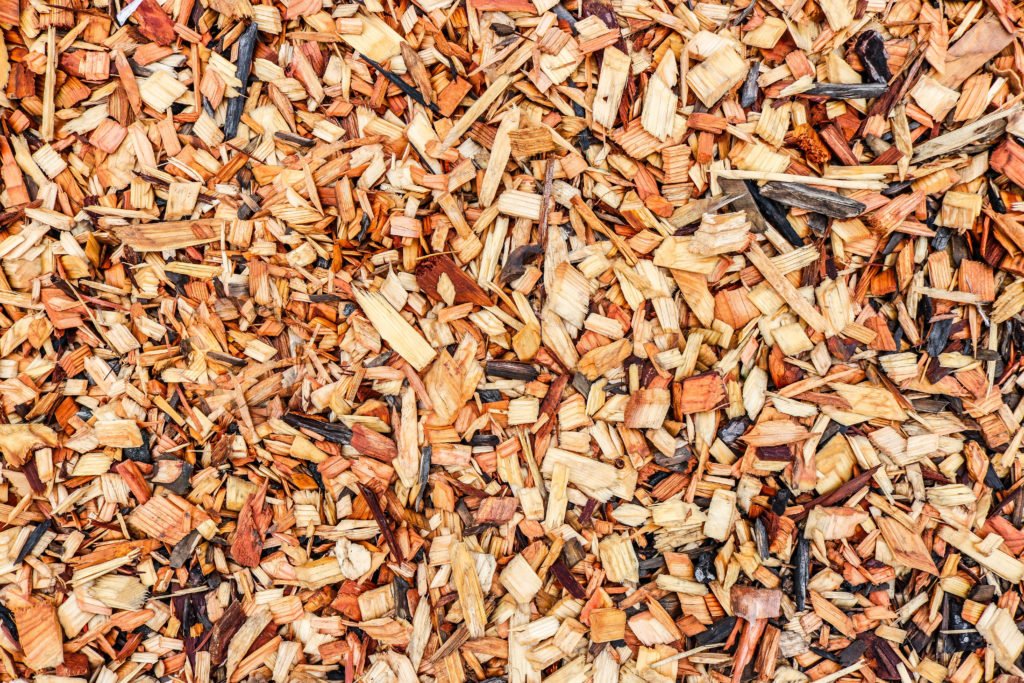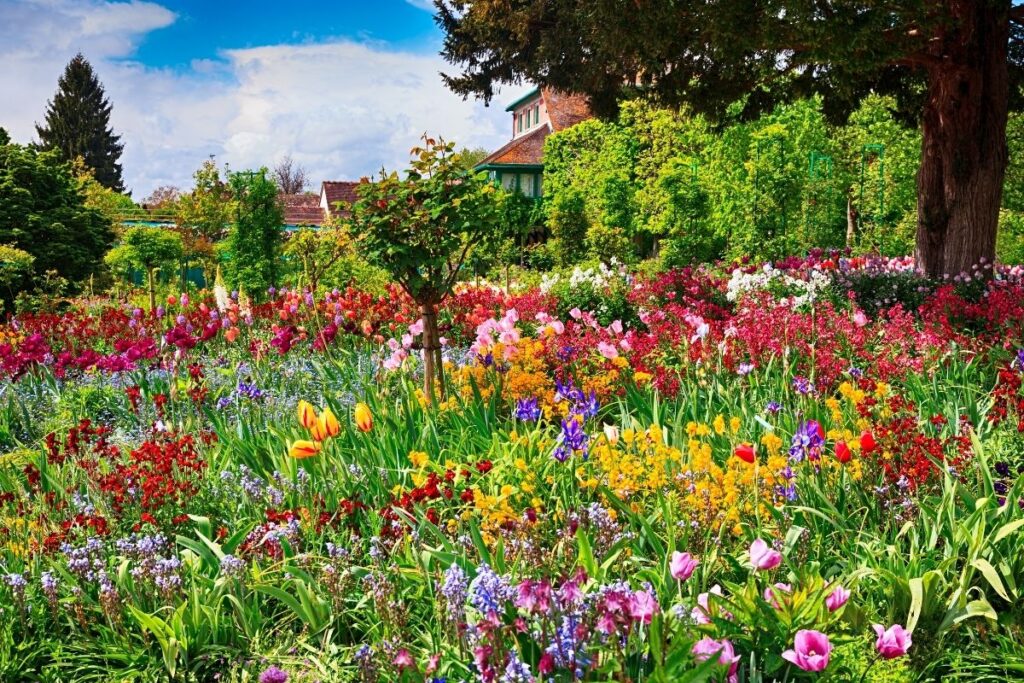It’s crazy to think how early we need to start thinking about how and what we are going to plant in the cool weather seasons! Planting a fall garden is great because it is such low maintenance compared to a summer garden.
Our garden here is trying it’s best to get the last bit of vegetable and fruit growth it can muster as the temperatures start fluctuating pretty dramatically between day and night. Luckily, we’ve been experiencing an epic heat wave that is in it’s second week so this is just what we need for that one last push.
I know soon the nights will be cooler, and in no time we’ll be waking up to a cool morning dew and frost on our cars and crops. It’s usually about this time where we begin to think about what to plant for the fall garden.
So what do we do now? For starters, enjoy what we have left! Get in that garden and do the weeding, don’t give up! You’ll be longing for the days where you can spend hours in there pruning and picking…and sweating!
Start planning for the Fall Garden
The game isn’t over folks, this is prime time for round two! What will you want to plant and harvest this fall and winter? Now is the time to start prepping and planting your fall garden.
Just like last year, fall is time to plant leafy greens, root vegetables, hardy herbs, brassicas (cabbage family), squashes and other fall gourds. Which fall vegetables should you grow in your fall garden?
The most popular fall veggies are broccoli, cauliflower, kale, chard, mustard greens and collards, spinach, lettuce, peas, green onions, carrots and radishes. These fall veggies prefer cooler weather and can withstand occasional light frostings.
Best late season vegetables for a fall garden
Fall is the perfect time for planting fall vegetables. The cooler weather helps your veggies grow healthily without getting overworked by hot summer days.
Here are some of the best late season vegetables to grow in a fall garden.
Best Vegetables to Grow in a Fall Garden
Garlic
It’s a great time of year to get started on planning where your garlic will go. Pick a sunny spot and keep in mind when your fall frost will take place.
This is especially important if you’re in a geography that gets hard frost like me here in the Northeast, plan to get a good 6 weeks ahead of that frost.
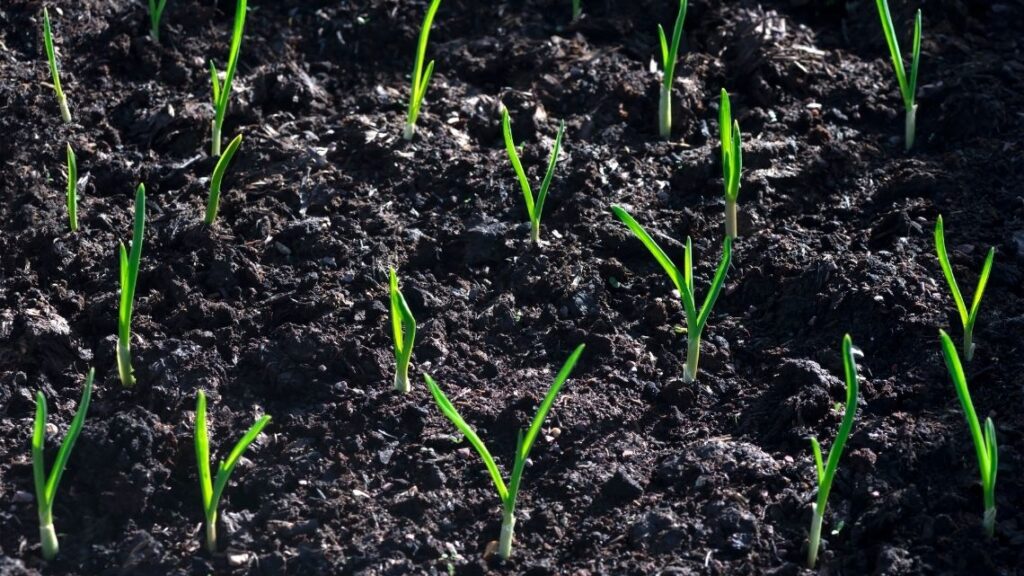
Otherwise, warmer climate lucky ducks can wait until winter wraps up in February and March. For those of us who are planting in the fall, expect to reap the benefits in as soon as the following late summer, in July or August.
But Garlic is typically planted in fall and harvested the following fall so it’s ok to wait until Sept or October to pull them if you want to make sure they grow big enough.
You can also try planting elephant garlic (it’s actually a leek) to get bigger bulbs than you’d usually find at stores.
Kale
Another cool-weather green that can stand some light frost, kale is perfect for fall gardens! Kale would fall into the large leafy green family and is really easy to grow. It’s a fall crop that will be ready for harvest in about 55-60 days, so it won’t be long until you’ll start seeing all those lovely fall salads.
You can plant these almost anytime from August through October as they prefer cooler weather. Kale doesn’t need full sun but does appreciate morning light, so if you’ve got a spot that gets great early morning sun then go for it!
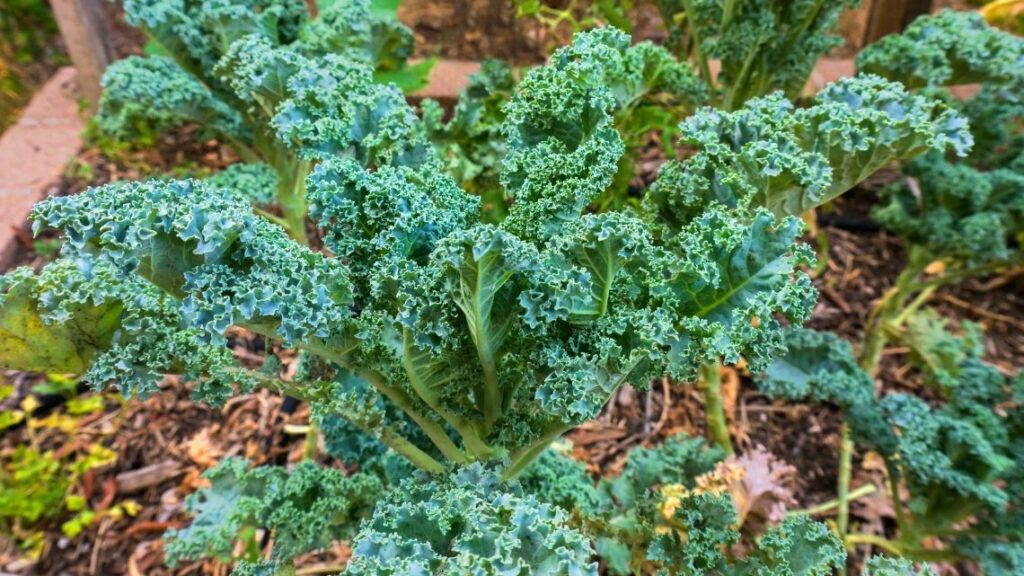
Sow your seeds every few inches and water well. You may even consider putting down some loose mulch to help retain moisture. By late fall your kale should start forming nice heads – and boy do I mean nice!
Kale is best prepared when the leaves are young and tender, so harvest at multiple stages to get your fill of delicious kale!
Potatoes
Oh my oh my let’s rejoice and celebrate the glory that is potato growing season.
I am practically made out of potatoes. If I could eat potatoes for every meal I would. They are so versatile and so easy to make and so delicious. Ok, I’ve gotten off topic so let’s get back to growing potatoes in your fall garden. You can do it a few different ways.
Yes, no longer is your only option to plant them directly into the ground, but you can easily plant them in bags, or buckets and get the same fabulous effect.
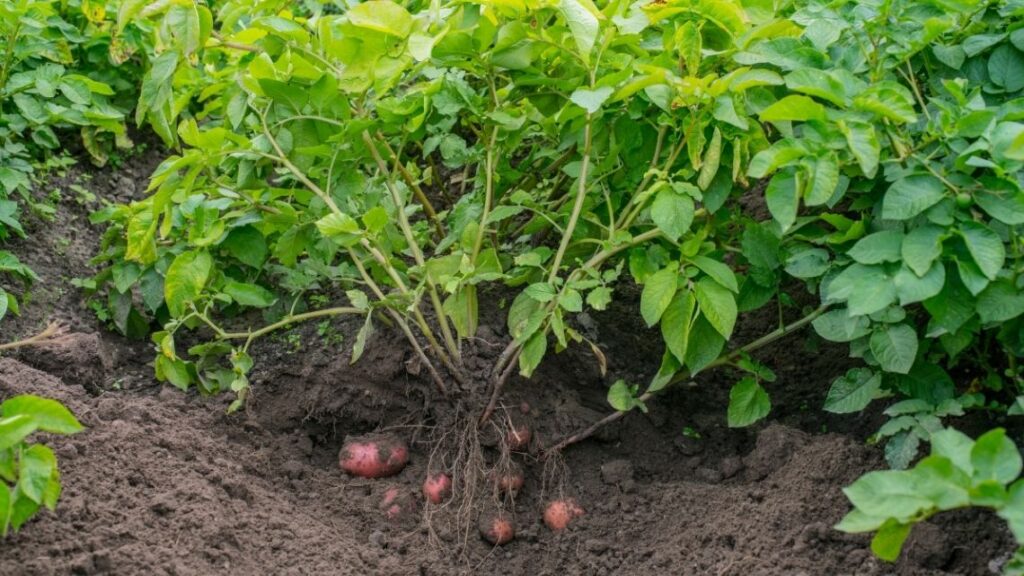
This post contains affiliate links. If you click through and make a purchase, I may earn a commission, at no additional cost to you!
This is wonderful for those who need a break from the backaches induced by hunching over and pulling plants. Take a look at this super easy to use potato grow bag.
Supposedly you can use the windows to pluck the ones that are ready, but I don’t find them to be very easy to use this way. They are very helpful for knowing when the potatoes have gotten big enough though!
Potatoes grow best from “seed potatoes” which are just small tubers that have been sprouted already. Planting can begin as soon as late as August through September depending on your region’s average frost date. It may take up to four months for them to grow to full size so keep that in mind too.
The good thing about potatoes is that it’s really up to you to decide when they are ready. I like my potatoes on the smaller side (like fingerlings) so I tend to pull them sooner than most or harvest them at whatever size you want!
Broccoli
I love broccoli. I do really enjoy the new creative uses for it, like broccoli ‘rice’, however, I usually eat it is as a raw snack or steamed. My baby enjoys it steamed and pureed as well so I’ll give it to her as much as I can until she starts being a picky toddler!
The great news is that we can plant broccoli now in August in full sun with richly fertilized soil for a fall harvest. Again, check the frosting schedule for your region as you’ll want to seed about 3 months before the frost.
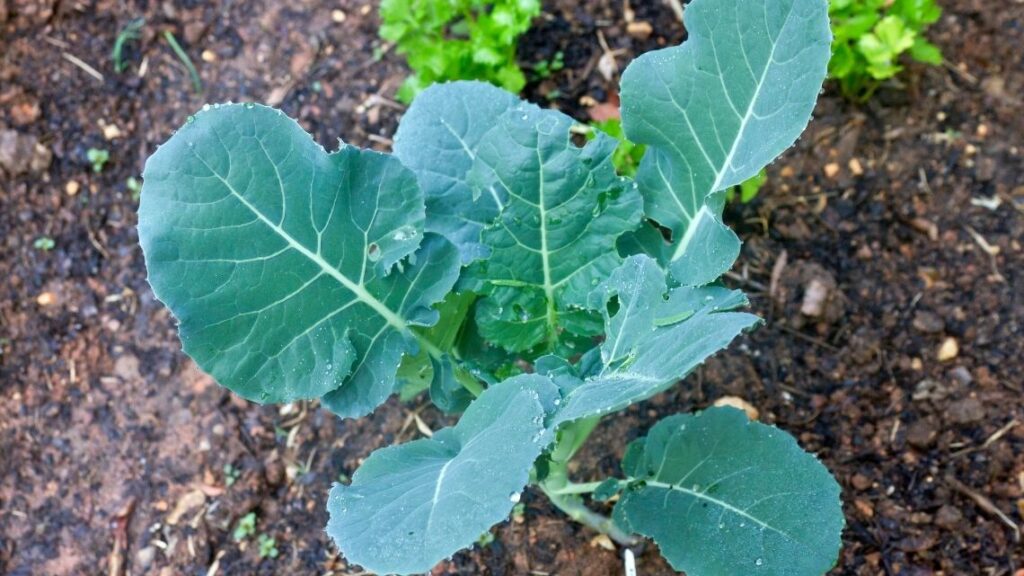
Broccoli does really well in cool weather and will need a lot of water, so make sure you’re mulching here too to keep plants moist and don’t wet growing broccoli heads.
Broccoli can be harvested when the head starts flowering but still has tight buds, or it can be harvested for its leaves which are also great in soups!
Spinach
Spinach is grown all year long for fresh use but it does particularly well during cool weather. This leafy vegetable has a ton of health benefits.
It’s very versatile; try baby leaves for salads or mature leaves for cooking. My favorite thing to do is make Garlic Spinach Chips – they are so easy to make and addicting. They never last more than a few minutes in my house!
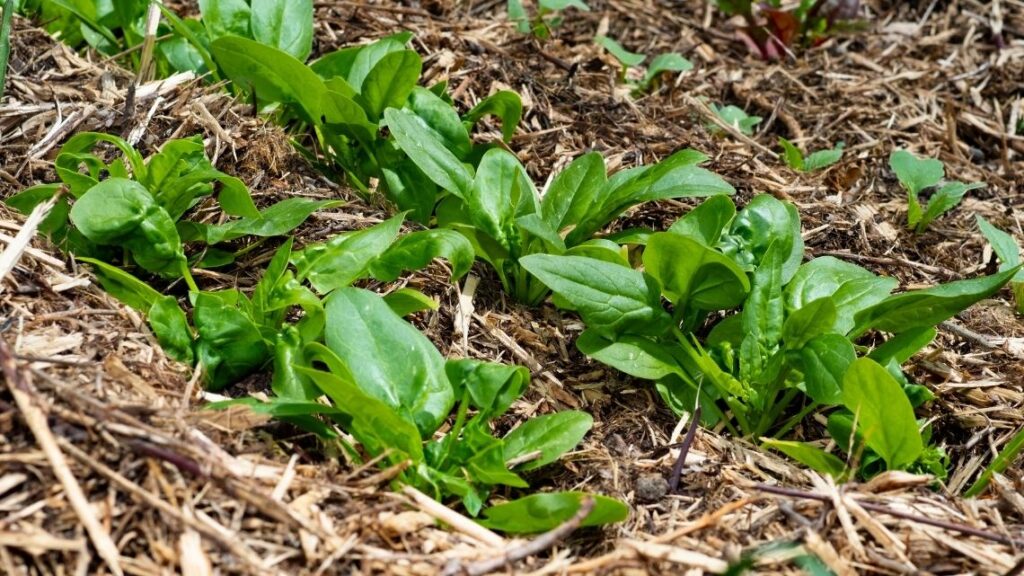
Also, seeing as how it’s usually a bit more expensive when buying from the grocery store, planting your own will save you heaps!
When planting spinach, you’ll be looking for a spot that gets a lot a light and can be shaded at times as well. You’ll want to look to plant these in late September to early October once temperatures drop to a consistent 60-70 degrees. Spinach is great in fall because it doesn’t bolt if the weather gets cold.
This is a great crop to grow in the fall as many leafy vegetables grow best in the cool weather months. You’ll need to prune them once they grow two inches, and again, remember to mulch!
Lettuce
Lettuce is great for fall gardens. Cool-weather lettuce varieties will thrive in fall gardens with lots of shade or partial sun, making them perfect crops for fall gardeners.
You can plant them September through October, though you’ll need to cover the seeds with a cold frame or start them indoors if frost is expected.
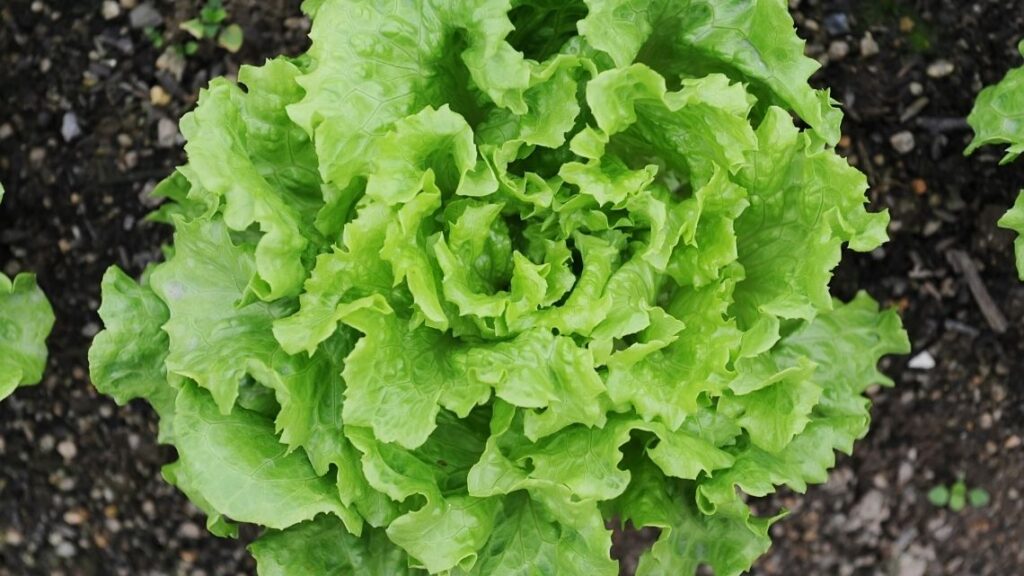
You’ll want to make sure your seedlings receive about 8 hours of sunlight on most days. Lettuce does best in well-draining soil, so water first thing in the morning so that moisture has time to dry out by midday. If you find yourself inundated with fall rains try covering your plants!
Continual harvesting lettuce is really easy – just harvest loose leaf lettuces by cutting the outside individual leaves off at their base. Keep harvesting your lettuce all fall long and into early winter, or until temperatures start to drop. Just be sure to leave a decent amount in the middle so that the plant continues to grow.
Swiss Chard
Swiss Chard is a fall crop, but a fall super star! Swiss chard can tolerate fall and winter temperatures and is a great fall vegetable to plant. It will keep producing into fall and even winter if there’s a warm spell.
Just like leaf lettuce, you can harvest the outer leaves of the plant as they mature, without stopping it from growing.
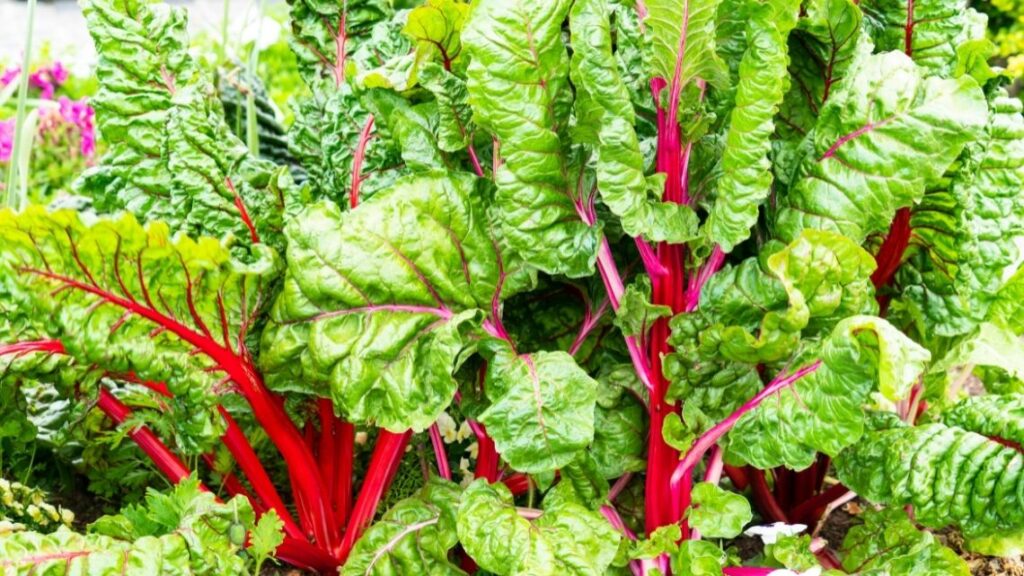
I love chard because it has so many uses. You can eat the leaves raw, sauté them with some garlic, add them to soups and stews, or steam them. The stalks can be used just like celery too. Try making a fall kale and chard saute for a delicious fall treat!
Just be sure to harvest your Swiss Chard before a hard freeze in – otherwise the plant will die.
Onions
Onions are one of the first veggies I started learning to garden properly with. It’s one of those amazing vegetables that you can regrow from scraps, and that you can also continually harvest from if you enjoy “green onions”. Just snip away at the greens and they keep growing back.
Thing is, I didn’t really know how long the actual onion bulb takes to mature. It can take up to 180 days – a really long time! So just keep this in mind when planting your onions. Don’t expect them to be ready to pull for about 6 months after planting.
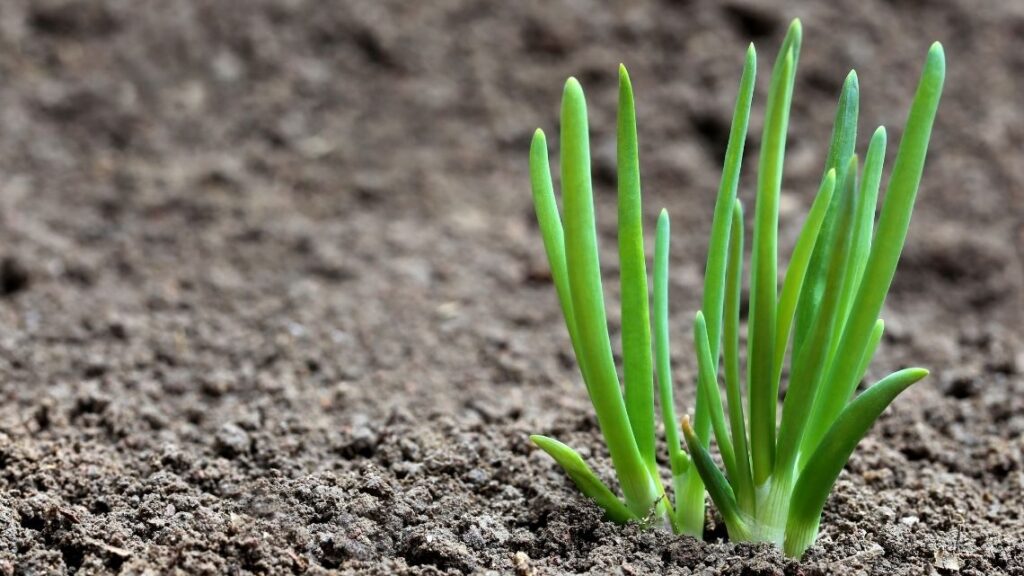
Although onions like it hot, planting them in fall gives you a bit of a head start and will allow them to mature over the fall and winter seasons. After planting and settling in during the fall, the bulbs will go dormant for the winter and reawaken in early spring.
Late-planted onions have a significant head start over spring-planted onions, allowing them to mature and harvest much sooner.
When to Plant Fall Crops
Check your frost schedule for your grow zone, but the rule of thumb for growing fall vegetables is to start sowing three months before first frost.
You want the seedlings to be strong enough and hardened off enough to plant into the ground while it’s still soft. Start off with premium seeds, like the ones below. All of these great seeds will do well in a fall garden.
Grow as many, or as little as you like! This bundle includes: broccoli, beets, carrots, cauliflower, fava beans, kale, peas, and radish.
How to Start Planting the Fall Garden
It’s super simple to get a fall garden started indoors, or even outdoors! You can do this a few ways actually, but let’s look at two super simple solutions to starting your cool weather vegetable seeds.
I really like these Biodegradable Peat Pots. They make transplanting seedlings super simple and easy because you can just put the actual pot right in the ground! They are all-inclusive and this one comes in a pack of 30.
You can also start your fall garden by using an indoor greenhouse to start your seedlings. This one is great because it’s small enough to tuck into a corner. It is lightweight and has wheels so it can easily be moved into an area that gets more light once the season changes. You can also start it outside and move it inside once it gets a bit chilly!
Best Fall Garden Location
When planting fall vegetables it’s important to consider your fall garden’s location and to carefully plot your garden beds. Your fall veggies will need protection from the elements during fall and winter, so if you live in an area where fall frosts are common or winters tend to be cold it’s important to find a good growing spot for fall vegetables.
Many fall vegetables will continue producing until fall frosts hit, so planting fall vegetables in multiple locations can help extend the fall growing season.
Place crops either in full sun protection if they prefer shade or place them under trees if they prefer less or dappled sun.
If fall frosts are expected, you’ll have to place fall vegetables in an area with protection from the elements.
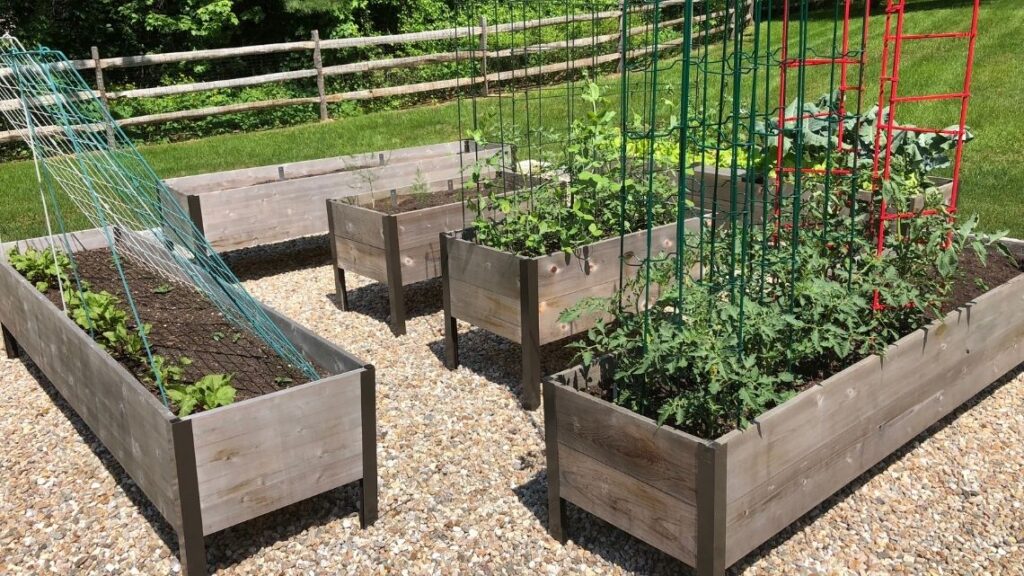
Fall vegetables typically do well planted in raised beds, where they are elevated off the ground. This allows easier watering, better soil nutrient control and better fall drainage than traditional garden beds. It also gives you easy access once your fall harvest is ready for picking – just step right up!
If you’re worried about excess fall moisture ruining your fall harvest or if your land tends to erode easily an elevated bed may be a good option for fall crops too, as it makes it easier to prevent erosion and water runoff.
I hope your fall gardens rock – happy planting friends.

